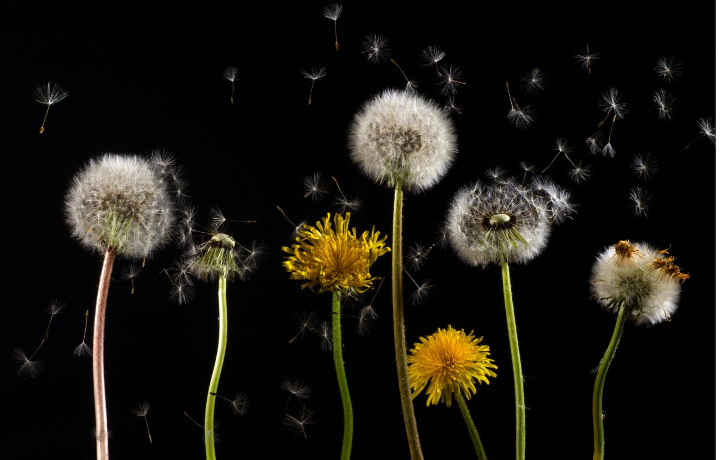Dandelion is also a type of herb. It is a common flower that can be found anywhere in Korea. Today, I would like to talk about my experience with dandelions, a Bible story featuring dandelions (although, by the way, I’m not Christian), a Korean legend featuring dandelions, the benefits of dandelions, and how to make dandelion tea.
My real story about dandelion
The following is a true story. One day during a difficult time in my life, I was out on a balcony smoking when I noticed a rag that had been left there for so long that dust had accumulated on it. But there, a dandelion had taken root and bloomed, its white seeds swaying in the wind from the outdoor portion of an air conditioner unit. I was so blown away by the tenacity of life that I got goosebumps. Dandelion is a common flower that can be found anywhere in Korea. The following is a photo of a dandelion

Dandelions in Bible and Korean legend
Dandelions in Bible
Dandelions also feature in the story of Noah’s Ark from the Bible. All the animals boarded the boat, but the dandelion was rooted to the ground and could not move. As the water gradually rose and would have overwhelmed the dandelion, it prayed for salvation, and God heard its prayer and made the wind blow the dandelion seeds far away. And so, with the help of God, the dandelion seeds landed on the roof of Noah’s ark.
Dandelions in Korean legend
There is also a Korean legend about the dandelion. Beautiful girls from all over the country were being selected and taken from their homes, and Dandelion, who was about to get married, was also going to be taken away unwillingly. Dandelion committed suicide in front of everyone when they came to take her away, and the next year her white flowers bloomed on the spot where she had died. When the people saw them, they started to call them dandelion flowers. It is said that Dandelion’s spirit returned as a flower.
The benefits of dandelions
Dandelions are not specially grown in Korean farms. It is a hardy plant that takes root in fields, around roads, in parks, and even on a rag next to an air-conditioner. Everyone reading this article has probably picked a dandelion and blown the seeds to make them fly away at least once in their lives. If not, I hope you give it a try tomorrow. That breath, like the breath of God, is a breeze that the dandelion will be thankful for.
Dandelion leaves contain vitamins A, B1, B2, C, magnesium, calcium, and potassium; they prevent fatty liver disease and act as a diuretic. When the flower blooms, pull out the entire root, dry it, pour 2-3 cups of water over about 10g of the dried root, boil for about 20 minutes, and then drink the resulting liquid. It is good for indigestion, diabetes, and bronchitis.
How to make dandelion tea
Dandelion tea is similar in color and taste to coffee, so much so that it can even be called dandelion coffee. Because it does not contain caffeine, it is good even for people with weak stomachs.
- Dig up some dandelion root, wash it well and chop it finely.
- Dry the root well on a sunny day.
- Fry it in a frying pan over low heat for a long time.
- Put 1 teaspoon per person in a teapot, add hot water, steep for about 5 minutes, then drink.
Dandelions are hardy, grow well in any soil, and tolerate cold very well. It is so tenacious that even if you cut the roots into pieces and bury them in the ground, new sprouts will grow from them. It is also a favorite flower of bees and butterflies because it has a lot of nectar